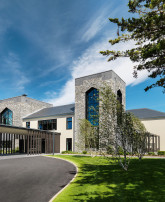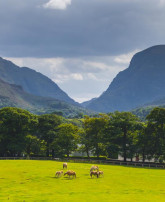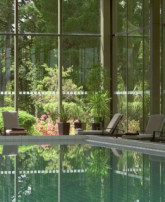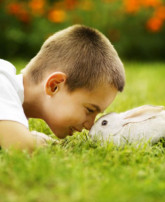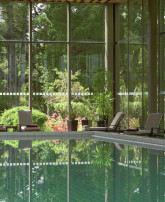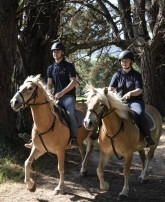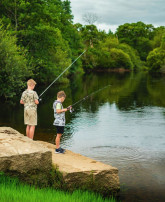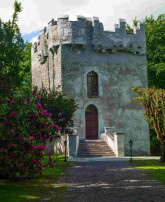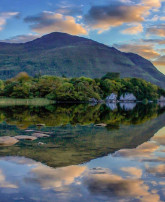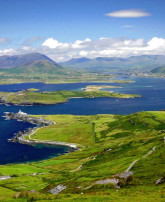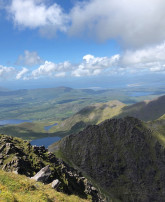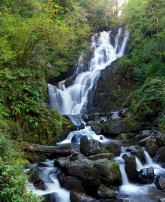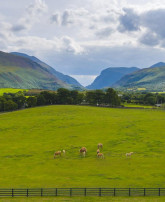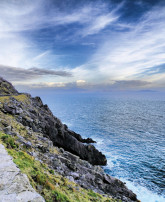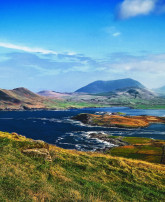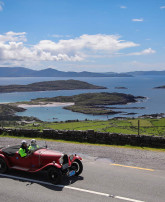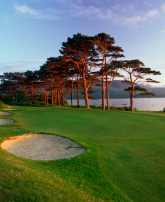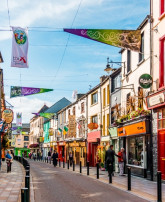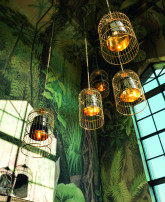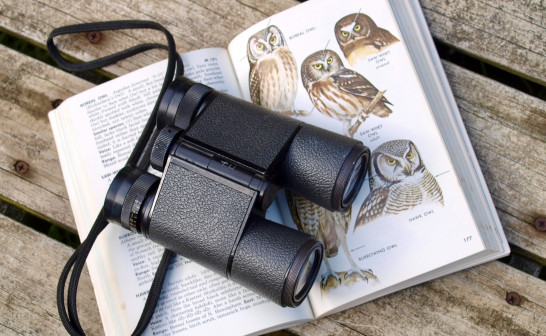
Bird watching in County Kerry
Posted: 01 October 2018

Kerry is a great environment for bird lovers. It’s such a mixture of habitats – mountain, woodland, coast, lake and river – and its location makes it a natural resting point for migrants crossing the Atlantic.
All year round, you will find something of interest in Kerry. The Killarney National Park is of special interest with some of the most important yew woodlands in Europe among its varied landscape. A little further afield, the Beara is a unique, limestone landscape with an otherworldly beauty and an ecosystem all of its own. There are several unique local variants on more widely known species to be added to your spotting list.
A seasonal guide
In the spring, the National Park and the famous lakes around Killarney are alive with dippers, coal tits and jay. Siskins love the pine woodlands and woodcocks take to their roosts as the sun sets. Anywhere along the coast is worth checking for travellers taking a break on a long Atlantic trek.
As summer comes around, it’s worth venturing a little further. The islands off the Kerry coast are beautiful in their own right. Skellig Michael (or Great Skellig) is a world famous monastery and Valentia Island played an important role in the first transatlantic cable. Both – and Kerry’s other islands – are accessible by boat from the west coast ports and are popular diving grounds too.
Storm petrels come here to breed in the summer, in fact it’s the most populous such breeding water in the world. These sharp little birds are known locally as “Mother Carey`s Chickens”.
Shearwater, gannet and puffins are among the other seasonal seabird visitors.
Kittiwakes come in to nest on the islands’ rocky cliffs. Fulmers can give you a nasty surprise if you disturb them, a jet of nasty green liquid. Look out too for guillemots and razorbills. Little Skellig becomes home to nearly 50,000 gannets in the summer.

Back inland, things are getting busy in the mountains. Birds of prey like peregrines can be spotted and choughs, ring ouzels, ravens and rock doves love the slopes of Ireland’s highest mountain range, McGillicuddy Reeks.
In the autumn, the coastal headlands and estuary waters come into their own, as ducks, waders and geese flock. Look out for widgeon and light-bellied brent geese. The Tralee estuary is probably the liveliest autumn habitat and Akeragh Lough is famous for American birds – waders most of all - on their travels.
Winter is no quieter. Scoters – black sea ducks which look a little like moorhens – love the Kerry coastal waters and flock in massive numbers, up to 10,000 at a time off Rossbeigh Strand.
Lough Gill holds plenty of scaup among its duck population and Brandon Bay has wintering grebes and divers.
All year round
Killarney National Park is a very special bird habitat. It’s based on the former estate of nearby Muckross House and really is a national treasure.
The park is a Special Protection Area because of its bird populations. It really is a mixture too – 141 species have been counted in the park.
You’re very unlikely to see redstart, garden and wood warblers, ring ouzels or red grouse anywhere else in Ireland. They nest here, in small numbers.
Also protected and found in the park are the merlin and peregrine and the Greenland white fronted goose.
Look out for choughs, nightjars and osprey too. The osprey – a majestic fish eagle – will be on its way from North Africa to the Scandinavian countries.
On high ground, the park abounds with ravens, stonechats and meadow pipits as well as nesting peregrines and merlins.
The lower woodlands are busy with robins and chaffinches.
On the park’s many bodies of water you are likely to see dippers, herons, mallards and other ducks, water rails, little grebes and – in a flash of brilliant blue – kingfishers.
As the seasons change, wintering birds congregate around Lough Leane in particular. Golden plovers, redwings and fieldfare stop in on the shores and on the water itself you may see goldeneye, widgeon, whooper swans and teals. Mute swans and little grebe also make their home there.
There are only around 12,000 Greenland white-fronted geese in the world, and they often spend the winter in the Killarney Valley, where they feed in bog lands. Coots and cormorants can also be seen on inland waters, as can gulls.
The summer brings another wave of visitors to the park. Cuckoos, swifts and swallows are a sign that the weather is changing.
Perhaps the jewel in the Park’s crown is the white-tailed eagle. These were reintroduced to the Park in a project that began in 2007. With its two-metre wingspan, it’s quite a sight if you see it.
Rare sights
Real birders with a list of species to tick off have a good chance of completing some of their work in Kerry.
Among the rarities you’ll find in Kerry are; grey phalarope, pectoral sandpipers and franklin's gull on Akeragh Lough.
Valentia Island and some of the Atlantic coast is worth a try for yellow browed warblers, red-eyed vireos and bee eaters.
From the casual to the committed, Kerry bird watching has something for everyone and a family break is an ideal reason to visit.



